|
Books Should Be Free Loyal Books Free Public Domain Audiobooks & eBook Downloads |
|
|
Books Should Be Free Loyal Books Free Public Domain Audiobooks & eBook Downloads |
|
Art |
|---|
|
Book type:
Sort by:
View by:
|
By: Joshua Slocum (1844-1910?) | |
|---|---|
 Voyage of the Liberdade
Voyage of the Liberdade
| |
By: Jozef Israëls (1824-1911) | |
|---|---|
 Rembrandt
Rembrandt
| |
By: Jules Verne (1828-1905) | |
|---|---|
 A Journey to the Interior of the Earth
A Journey to the Interior of the Earth
A historical manuscript penned by a medieval Norse poet. A mysterious code. Three intrepid explorers. A subterranean world filled with prehistoric creatures and proto-humans. These are some of the brilliant ideas that are superbly blended in A Journey to the Interior of the Earth by Jules Verne. Jules Verne, the French writer who created several works of science fiction, adventure stories and very popular novels, wrote A Journey to the Interior of the Earth in 1864. Some of his other books explore different aspects of geography, space and time travel... | |
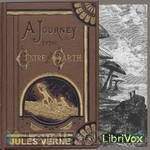 Journey to the Centre of the Earth
Journey to the Centre of the Earth
The story involves a German professor (Otto Lidenbrock in the original French, Professor Von Hardwigg in the most common English translation) who believes there are volcanic tubes going toward the center of the Earth. He, his nephew Axel (Harry), and their guide Hans encounter many adventures, including prehistoric animals and natural hazards, eventually coming to the surface again in southern Italy. | |
 Celebrated Travels and Travellers, vol. 1
Celebrated Travels and Travellers, vol. 1
The famous writer of great adventure stories Jules Verne wrote also several lesser known, but good non-fiction works. "Celebrated travels and travellers" tells the story of geographical discovery in the same well written and precise manner we are used to finding in Verne’s fiction books. This book is divided into 3 volumes. This is the first volume, named the "Exploration of the World" and it covers the period in the World's history of exploration from B.C. 505 to the close of the 17th century. The second and third volumes are respectively entitled "The great navigators of the 18th century" and "The great navigators of the 19th century".Coordinated by Kristine Bekere and Kajo. | |
By: Julia Darrow Cowles (1862-1919) | |
|---|---|
 Art of Story-Telling, with nearly half a hundred stories
Art of Story-Telling, with nearly half a hundred stories
In preparing this book the author has sought to awaken a keener perception and a higher appreciation of the artistic and ethical value of story-telling; to simplify some of its problems; to emphasize the true delight which the story-teller may share with her hearers; and to present fresh material which answers to the test of being good in substance as well as in literary form. - Summary by From the preface | |
By: Julian Street (1879-1947) | |
|---|---|
 Ship-Bored
Ship-Bored
| |
By: Juliet Helena Lumbard James (1864-) | |
|---|---|
 Sculpture of the Exposition Palaces and Courts
Sculpture of the Exposition Palaces and Courts
| |
 Palaces and Courts of the Exposition
Palaces and Courts of the Exposition
| |
By: K. Langloh (Katie Langloh) Parker (1856-1940) | |
|---|---|
 The Euahlayi Tribe; a study of aboriginal life in Australia
The Euahlayi Tribe; a study of aboriginal life in Australia
| |
By: K. Langloh Parker | |
|---|---|
 Australian Legendary Tales Folk-Lore of the Noongahburrahs As Told To The Piccaninnies
Australian Legendary Tales Folk-Lore of the Noongahburrahs As Told To The Piccaninnies
A Collection of Australian Aboriginal Legendary Folk-Lore Tales, legends of the Narran tribe, known among themselves as Noongahburrahs. | |
By: Kate Douglas Smith Wiggin (1856-1923) | |
|---|---|
 The Girl and the Kingdom Learning to Teach
The Girl and the Kingdom Learning to Teach
| |
By: Kate Heintz Watson | |
|---|---|
 Textiles and Clothing
Textiles and Clothing
| |
By: Katharine Elizabeth Dopp (1863-1944) | |
|---|---|
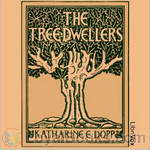 The Tree-Dwellers
The Tree-Dwellers
Katharine E. Dopp was well-known as a teacher and writer of children’s textbooks at the turn of the 20th Century. She was among the first educators to encourage the incorporation of physical and practical activity into the elementary school curriculum at a time when such activities were becoming less commonplace in a child’s home environment. The Tree-Dwellers – The Age of Fear is the first in a series of elementary school texts written by Ms. Dopp that focus on the anthropological development of early human groups... | |
 The Later Cave-Men
The Later Cave-Men
| |
By: Katharine Pyle (1863-1938) | |
|---|---|
 Tales of Folk and Fairies
Tales of Folk and Fairies
In "Tales of Folk and Fairies" Ms. Pyle tells 15 different children's stories from around the world; each more delightful than the last. Each story stands completely on it's own and although they were probably meant for children, adults will certainly enjoy them as well. | |
By: Kenyon Cox (1856-1919) | |
|---|---|
 Artist and Public And Other Essays On Art Subjects
Artist and Public And Other Essays On Art Subjects
| |
By: King of England James I (1566-1625) | |
|---|---|
 A Counter-Blaste to Tobacco
A Counter-Blaste to Tobacco
| |
By: L. (Leonard) Raven-Hill (1867-1942) | |
|---|---|
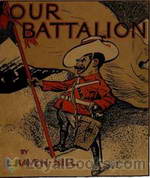 Our Battalion Being Some Slight Impressions of His Majesty's Auxiliary Forces, in Camp and Elsewhere
Our Battalion Being Some Slight Impressions of His Majesty's Auxiliary Forces, in Camp and Elsewhere
| |
By: L. H. (Lionel Hugh) Branson (1879-1946) | |
|---|---|
 Indian Conjuring
Indian Conjuring
| |
By: L. Higgin | |
|---|---|
 Handbook of Embroidery
Handbook of Embroidery
| |
By: Lacy Collison-Morley | |
|---|---|
 Greek and Roman Ghost Stories
Greek and Roman Ghost Stories
A non-fiction work, comparing and collecting ghost stories by Classical Greek and Republican or Imperial Roman authors. | |
By: Lawrence Beesley (1877-1967) | |
|---|---|
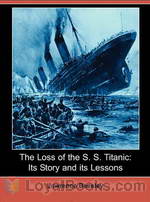 The Loss of the S. S. Titanic
The Loss of the S. S. Titanic
This is a 1st hand account written by a survivor of the Titanic about that fateful night and the events leading up to it as well as the events that followed its sinking. | |
By: Leader Scott (1837-1902) | |
|---|---|
 Fra Bartolommeo
Fra Bartolommeo
| |
By: Leo Tolstoy (1828-1910) | |
|---|---|
 On the Significance of Science and Art
On the Significance of Science and Art
| |
By: Leonardo da Vinci | |
|---|---|
 The Notebooks of Leonardo Da Vinci
The Notebooks of Leonardo Da Vinci
The Notebooks of Leonardo Da VinciPREFACEA singular fatality has ruled the destiny of nearly all the most famous of Leonardo da Vinci's works. Two of the three most important were never completed, obstacles having arisen during his life-time, which obliged him to leave them unfinished; namely the Sforza Monument and the Wall-painting of the Battle of Anghiari, while the third--the picture of the Last Supper at Milan--has suffered irremediable injury from decay and the repeated restorations to which it was recklessly subjected during the XVIIth and XVIIIth centuries... | |
By: Lew Lysle Harr (1882-) | |
|---|---|
 Pung Chow The Game of a Hundred Intelligences. Also known as Mah-Diao, Mah-Jong, Mah-Cheuk, Mah-Juck and Pe-Ling
Pung Chow The Game of a Hundred Intelligences. Also known as Mah-Diao, Mah-Jong, Mah-Cheuk, Mah-Juck and Pe-Ling
| |
By: Lewis Falley Allen (1800-1890) | |
|---|---|
 Rural Architecture Being a Complete Description of Farm Houses, Cottages, and Out Buildings
Rural Architecture Being a Complete Description of Farm Houses, Cottages, and Out Buildings
| |
By: Lewis Spence (1874-1955) | |
|---|---|
 Hero Tales and Legends of the Rhine
Hero Tales and Legends of the Rhine
| |
By: Lilian Whiting (1847-1942) | |
|---|---|
 Italy, the Magic Land
Italy, the Magic Land
| |
By: Lina Beard | |
|---|---|
 Little Folks' Handy Book
Little Folks' Handy Book
| |
By: Logan Marshall | |
|---|---|
 The Sinking of the Titanic and Great Sea Disasters
The Sinking of the Titanic and Great Sea Disasters
Logan Marshall's book "The Sinking of the Titanic and Great Sea Disasters" gives readers a first-hand account of the greatest sea disaster of all time straight from the survivors of the ill-fated sunken ship. Unlike many of the books about the Titanic that was written recently, Logan Marshall was fortunate that he was able to interview the survivors of the Titanic and access to all the important documents about the ship, including the diagrams, maps and actual photographs related to the disaster... | |
By: Lord Redesdale (1837-1916) | |
|---|---|
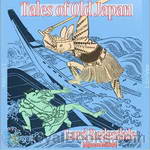 Tales of Old Japan
Tales of Old Japan
Tales of Old Japan by Lord Redesdale is a collection of short stories focusing on Japanese life of the Edo period (1603 - 1868). It contains a number of classic Japanese stories, fairy tales, and other folklore; as well as Japanese sermons and non-fiction pieces on special ceremonies in Japanese life, such as marriage and harakiri, as observed by Lord Redesdale. The best know story of these is "The Forty-seven Ronins" a true account of samurai revenge as it happened at the beginning of 18th century Japan... | |
By: Lorinda Munson Bryant (1855-1933) | |
|---|---|
 The Children's Book of Celebrated Pictures
The Children's Book of Celebrated Pictures
| |
By: Louis C. Dalton | |
|---|---|
 Swimming Scientifically Taught A Practical Manual for Young and Old
Swimming Scientifically Taught A Practical Manual for Young and Old
| |
By: Louis Tracy (1863-1928) | |
|---|---|
 A Son of the Immortals
A Son of the Immortals
| |
By: Lucy Abbot Throop | |
|---|---|
 Furnishing the Home of Good Taste
Furnishing the Home of Good Taste
FURNISHING THE HOME OF GOOD TASTEA BRIEF SKETCH OF THE PERIOD STYLES IN INTERIOR DECORATION WITH SUGGESTIONS AS TO THEIR EMPLOYMENT IN THE HOMES OF TODAY BY LUCY ABBOT THROOP Preface To try to write a history of furniture in a fairly short space is almost as hard as the square peg and round hole problem. No matter how one tries, it will not fit. One has to leave out so much of importance, so much of historic and artistic interest, so much of the life of the people that helps to make the subject vivid, and has to take so much for granted, that the task seems almost impossible... | |
By: Luella Agnes Owen (1852-1932) | |
|---|---|
 Cave Regions of the Ozarks and Black Hills
Cave Regions of the Ozarks and Black Hills
| |
By: M. B. (Margaret Bertha) Synge (-1939) | |
|---|---|
 A Book of Discovery The History of the World's Exploration, From the Earliest Times to the Finding of the South Pole
A Book of Discovery The History of the World's Exploration, From the Earliest Times to the Finding of the South Pole
| |
By: M. I. (Maud Isabel) Ebbutt (1867-) | |
|---|---|
 Hero-Myths & Legends of the British Race
Hero-Myths & Legends of the British Race
| |
By: Mabel Cook Cole (-1978) | |
|---|---|
 Philippine Folk Tales
Philippine Folk Tales
| |
By: Mabel Quiller-Couch (1866-1924) | |
|---|---|
 Cornwall's Wonderland
Cornwall's Wonderland
| |
By: Mae Marsh (1894-1968) | |
|---|---|
 Screen Acting
Screen Acting
Silent film star, Mae Marsh, recounts her life as an actress in this publication, what she deems as being the answer to thousands of letters written to her over the years inquiring about what it takes to be a screen actor. As she states in the introduction, "So much ambition, so many questions!" - Summary by Amanda Friday | |
By: Manly Wade Wellman (1903-1986) | |
|---|---|
 The Golgotha Dancers
The Golgotha Dancers
| |
By: Marcus Vitruvius Pollio (75 BC - c. 15 BC) | |
|---|---|
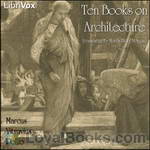 Ten Books on Architecture
Ten Books on Architecture
On Architecture is a treatise on architecture written by the Roman architect Vitruvius and dedicated to his patron, the emperor Caesar Augustus as a guide for building projects. The work is one of the most important sources of modern knowledge of Roman building methods as well as the planning and design of structures, both large (aqueducts, buildings, baths, harbours) and small (machines, measuring devices, instruments). He is also the prime source of the famous story of Archimedes and his bath-time discovery. | |
By: Margaret Brown Klapthor (1922-1994) | |
|---|---|
 Presentation Pieces in the Museum of History and Technology Contributions from the Museum of History and Technology, Paper No. 47 [Smithsonian Institution]
Presentation Pieces in the Museum of History and Technology Contributions from the Museum of History and Technology, Paper No. 47 [Smithsonian Institution]
| |
By: Margaretta Archambault (1856-1956) | |
|---|---|
 Guide Book of Art, Architecture, and Historic Interests in Pennsylvania
Guide Book of Art, Architecture, and Historic Interests in Pennsylvania
This book was curated by the State Federation of Pennsylvania Women for tourists' use on a journey to Pennsylvania. Each of Pennsylvania's 67 counties has its own chapter, discussing beautiful art and buildings that may be found there . These chapters were each written by a knowledgeable person from that county. While details are often sparse, the guide is an excellent starting point for individuals who wish to learn more about local history of Pennsylvania. Note: While the book was compiled in 1917, the first world war prevented its publication until 1924... | |
By: Marianne Farningham (1834-1909) | |
|---|---|
 Grace Darling Heroine of the Farne Islands
Grace Darling Heroine of the Farne Islands
| |
By: Marianne Margaret Compton Cust Alford (1817-1888) | |
|---|---|
 Needlework As Art
Needlework As Art
| |
By: Marie D. Webster (1859-1956) | |
|---|---|
 Quilts, Their Story and How to Make Them
Quilts, Their Story and How to Make Them
Although the quilt is one of the most familiar and necessary articles in our households, its story is yet to be told. In spite of its universal use and intimate connection with our lives, its past is a mystery which -- at the most -- can only be partially unravelled. (from the Introduction) | |
By: Mark Twain | |
|---|---|
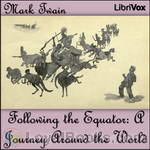 Following the Equator: A Journey Around the World
Following the Equator: A Journey Around the World
Following the Equator (American English title) or More Tramps Abroad (English title) is a non-fiction travelogue published by American author Mark Twain in 1897. Twain was practically bankrupt in 1894 due to a failed investment into a “revolutionary” typesetting machine. In an attempt to extricate himself from debt of $100,000 (equivalent of about $2 million in 2005) he undertook a tour of the British Empire in 1895, a route chosen to provide numerous opportunities for lectures in the English language... | |
By: Marsden Hartley (1877-1943) | |
|---|---|
 Adventures in the Arts Informal Chapters on Painters, Vaudeville, and Poets
Adventures in the Arts Informal Chapters on Painters, Vaudeville, and Poets
| |
By: Martin Farquhar Tupper (1810-1889) | |
|---|---|
 My Life as an Author
My Life as an Author
| |
By: Mary A. McCormack | |
|---|---|
 Spool Knitting
Spool Knitting
| |
By: Mary Buckle | |
|---|---|
 Art in Needlework A Book about Embroidery
Art in Needlework A Book about Embroidery
| |
By: Mary E. Blain (1872-) | |
|---|---|
 Games For All Occasions
Games For All Occasions
| |
By: Mary Lois Kissell | |
|---|---|
 Aboriginal American Weaving
Aboriginal American Weaving
| |
By: Mary MacGregor | |
|---|---|
 Stories of King Arthur's Knights Told to the Children
Stories of King Arthur's Knights Told to the Children
A collection of Arthurian tales retold for children. | |
By: Mary Roberts Rinehart (1876-1958) | |
|---|---|
 Tenting To-Night; A Chronicle Of Sport And Adventure In Glacier Park And The Cascade Mountains
Tenting To-Night; A Chronicle Of Sport And Adventure In Glacier Park And The Cascade Mountains
This is the second of two travelogues published by Mary Roberts Rinehart (1876-1958). Both deal with Glacier National Park, and this book also deals with the Cascade Mountains (The other is entitled Through Glacier Park). Rinehart wrote hundreds of short stories, poems, travelogues and articles, though she is most famous for her mystery stories. The region that became Glacier National Park was first inhabited by Native Americans and upon the arrival of European explorers, was dominated by the Blackfeet in the east and the Flathead in the western regions. | |
By: Mary Schell Hoke Bacon (1870-1934) | |
|---|---|
 Pictures Every Child Should Know A Selection of the World's Art Masterpieces for Young People
Pictures Every Child Should Know A Selection of the World's Art Masterpieces for Young People
| |
By: Mary Stuart Boyd (-1937) | |
|---|---|
 A Versailles Christmas-Tide
A Versailles Christmas-Tide
| |
By: Matthew A. Henson (1866-1955) | |
|---|---|
 Negro Explorer at the North Pole
Negro Explorer at the North Pole
In this fascinating memoir, Matthew Henson describes the incredibly dangerous, exhausting, and bone-chilling trip to what was until then the never-before reached point on earth, the North Pole. "Robert Peary is remembered as the intrepid explorer who successfully reached the North Pole in 1909. Far less celebrated is his companion, Matthew Henson, a black man from Maryland. Henson's gripping memoir, first published in 1912, tells this unsung hero's story in his own words. Henson...was indispensable to the famous explorer's journey; he learned the language of the Eskimos, was an expert dog-sled driver and even built the sleds... | |
By: Matthew Digby Wyatt (1820-1877) | |
|---|---|
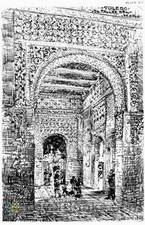 An Architect's Note-Book in Spain principally illustrating the domestic architecture of that country.
An Architect's Note-Book in Spain principally illustrating the domestic architecture of that country.
| |
By: Matthew Holbeche Bloxam (1805-1888) | |
|---|---|
 The Principles of Gothic Ecclesiastical Architecture, Elucidated by Question and Answer, 4th ed.
The Principles of Gothic Ecclesiastical Architecture, Elucidated by Question and Answer, 4th ed.
| |
By: Maturin Murray Ballou (1820-1895) | |
|---|---|
 Foot-prints of Travel or, Journeyings in Many Lands
Foot-prints of Travel or, Journeyings in Many Lands
| |
 Due West or Round the World in Ten Months
Due West or Round the World in Ten Months
| |
By: Maud Cruttwell | |
|---|---|
 Luca Signorelli
Luca Signorelli
| |
By: Maude L. Radford (1875-1934) | |
|---|---|
 King Arthur and His Knights
King Arthur and His Knights
Published in 1903, King Arthur and His Knights by Maude L. Radford is an easy to read version of the Arthurian legends, made simple and interesting for children. Maude Lavinia Radford Warren was a Canadian born American who taught literature and composition at the University of Chicago between 1893-1907. Following the success of some of her books, she left teaching to take up writing as a full time career. She also served as a war correspondent for the New York Times magazine during WWI and contributed several remarkable features on the role of women in the conflict... | |
By: Maurice Henry Hewlett (1861-1923) | |
|---|---|
 Earthwork out of Tuscany Being Impressions and Translations of Maurice Hewlett
Earthwork out of Tuscany Being Impressions and Translations of Maurice Hewlett
| |
By: Maurice Leblanc (1864-1941) | |
|---|---|
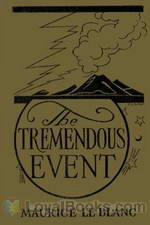 The Tremendous Event
The Tremendous Event
| |
By: Maurice Walter Brockwell (1869-1958) | |
|---|---|
 Leonardo Da Vinci
Leonardo Da Vinci
| |
By: Melvin W. [Editor] Sheppard | |
|---|---|
 Games and Play for School Morale A Course of Graded Games for School and Community Recreation
Games and Play for School Morale A Course of Graded Games for School and Community Recreation
| |
By: Miguel Saderra Masó (-1939) | |
|---|---|
 Catalogue of Violent and Destructive Earthquakes in the Philippines With an Appendix: Earthquakes in the Marianas Islands 1599-1909
Catalogue of Violent and Destructive Earthquakes in the Philippines With an Appendix: Earthquakes in the Marianas Islands 1599-1909
| |
By: Milburg F. Mansfield (1871-) | |
|---|---|
 Royal Palaces and Parks of France
Royal Palaces and Parks of France
| |
By: Milton C. (Milton Cooper) Work (1864-1934) | |
|---|---|
 Auction of To-day
Auction of To-day
| |
By: Mortimer Menpes (1855-1938) | |
|---|---|
 Rembrandt
Rembrandt
| |
By: Mrs. (Isabella Mary) Beeton (1836-1865) | |
|---|---|
 Beeton's Book of Needlework
Beeton's Book of Needlework
| |
By: Mrs. Alec-Tweedie (-1940) | |
|---|---|
 A Girl's Ride in Iceland
A Girl's Ride in Iceland
| |
By: Mrs. Lambert Chambers (1878-1960) | |
|---|---|
 Lawn Tennis for Ladies
Lawn Tennis for Ladies
| |
By: Nathaniel Hawthorne (1804-1864) | |
|---|---|
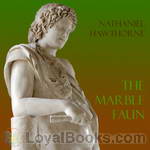 The Marble Faun
The Marble Faun
The Marble Faun is Hawthorne's most unusual romance. Writing on the eve of the American Civil War, Hawthorne set his story in a fantastical Italy. The romance mixes elements of a fable, pastoral, gothic novel, and travel guide. In the spring of 1858, Hawthorne was inspired to write his romance when he saw the Faun of Praxiteles in a Roman sculpture gallery. The theme, characteristic of Hawthorne, is guilt and the Fall of Man. The four main characters are Miriam, a beautiful painter who is compared... | |
By: Nathaniel Southgate Shaler (1841-1906) | |
|---|---|
 Outlines of the Earth's History A Popular Study in Physiography
Outlines of the Earth's History A Popular Study in Physiography
| |
By: Northcote Whitridge Thomas (1868-1936) | |
|---|---|
 Kinship Organisations and Group Marriage in Australia
Kinship Organisations and Group Marriage in Australia
| |
By: Okakura Kakuzo (1863-1913) | |
|---|---|
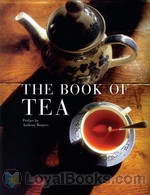 The Book of Tea
The Book of Tea
The Book of Tea was written by Okakura Kakuzo in the early 20th century. It was first published in 1906, and has since been republished many times. – In the book, Kakuzo introduces the term Teaism and how Tea has affected nearly every aspect of Japanese culture, thought, and life. The book is noted to be accessibile to Western audiences because though Kakuzo was born and raised Japanese, he was trained from a young age to speak English; and would speak it all his life, becoming proficient at communicating his thoughts in the Western Mind... | |
By: Oliver Herford (1863-1935) | |
|---|---|
 Confessions of a Caricaturist
Confessions of a Caricaturist
| |
By: Otto K. Wohlers | |
|---|---|
 A Course In Wood Turning
A Course In Wood Turning
| |
By: Otto von Kotzebue (1787-1846) | |
|---|---|
 A New Voyage Round the World in the Years 1823, 24, 25, and 26. Vol. 1
A New Voyage Round the World in the Years 1823, 24, 25, and 26. Vol. 1
| |
 A New Voyage Round the World, in the years 1823, 24, 25, and 26, Vol. 2
A New Voyage Round the World, in the years 1823, 24, 25, and 26, Vol. 2
| |
By: P. C. (Peter Charles) Remondino (1846-1926) | |
|---|---|
 History of Circumcision from the Earliest Times to the Present Moral and Physical Reasons for its Performance
History of Circumcision from the Earliest Times to the Present Moral and Physical Reasons for its Performance
| |
By: P. T. Barnum (1810-1891) | |
|---|---|
 Struggles and Triumphs, or Forty Years' of Recollections of P.T. Barnum, written by Himself
Struggles and Triumphs, or Forty Years' of Recollections of P.T. Barnum, written by Himself
The 1873 edition of the autobiography of the founding genius of the "Greatest Show on Earth," P.T. Barnum. It details his life and business struggles up to the year 1872. Not only a showman and a museum operator, but an antislavery politician, Connecticut state legislator, Mayor of Bridgeport, Connecticut, and temperance lecturer, Barnum lays aside some of the gilding to provide his thoughts on his career, economics, how to make money, and other issues of the day. - Summary by DrPGould | |
By: Padraic Colum (1881-1972) | |
|---|---|
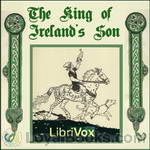 The King of Ireland's Son
The King of Ireland's Son
The King of Ireland's Son is a children's novel published in Ireland in 1916 written by Padraic Colum, and illustrated by Willy Pogany. It is the story of the eldest of the King of Ireland's sons, and his adventures winning and then finding Fedelma, the Enchanter's Daughter, who after being won is kidnapped from him by the King of the Land of Mist. It is solidly based in Irish folklore, itself being originally a folktale. (Introduction by Wikipedia) | |
By: Paul Boyton (1848-1924) | |
|---|---|
 The Story of Paul Boyton Voyages on All the Great Rivers of the World
The Story of Paul Boyton Voyages on All the Great Rivers of the World
| |
By: Pearl White (1889-1938) | |
|---|---|
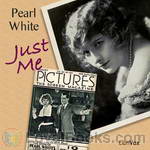 Just Me
Just Me
Perhaps the first memoir written by a film celebrity, Pearl White's Just Me gives a first-person account of the actress' rise to stardom. White guides us through her early childhood, her development as a performer, and finally to her breakout role in The Perils of Pauline--a role that made her the most popular "serial queen" of early cinema. Although romanticized and somewhat embellished, this book gives us a fascinating glimpse into the film industry's earliest years and the various myths of film stardom. | |
By: Pemberton Ginther (1869-1959) | |
|---|---|
 Miss Pat at School
Miss Pat at School
| |
By: Percy Addleshaw (1866-1916) | |
|---|---|
 Bell's Cathedrals: The Cathedral Church of Exeter A Description of Its Fabric and a Brief History of the Episcopal See
Bell's Cathedrals: The Cathedral Church of Exeter A Description of Its Fabric and a Brief History of the Episcopal See
| |
By: Percy B. Green | |
|---|---|
 A History of Nursery Rhymes
A History of Nursery Rhymes
| |
By: Percy M. Turner | |
|---|---|
 Van Dyck
Van Dyck
A biography and critique of Van Dyck in The Masterpieces in Colour series. The Plates of the paintings are fully described and the artistic periods in his life's work are given as well as his place in history. | |
By: Peter C. Duchochois | |
|---|---|
 Photographic Reproduction Processes
Photographic Reproduction Processes
| |
By: Peter Morse | |
|---|---|
 Rembrandt's Etching Technique: An Example
Rembrandt's Etching Technique: An Example
| |
By: Phil M. (Phil Madison) Riley (1882-) | |
|---|---|
 The Colonial Architecture of Philadelphia
The Colonial Architecture of Philadelphia
| |